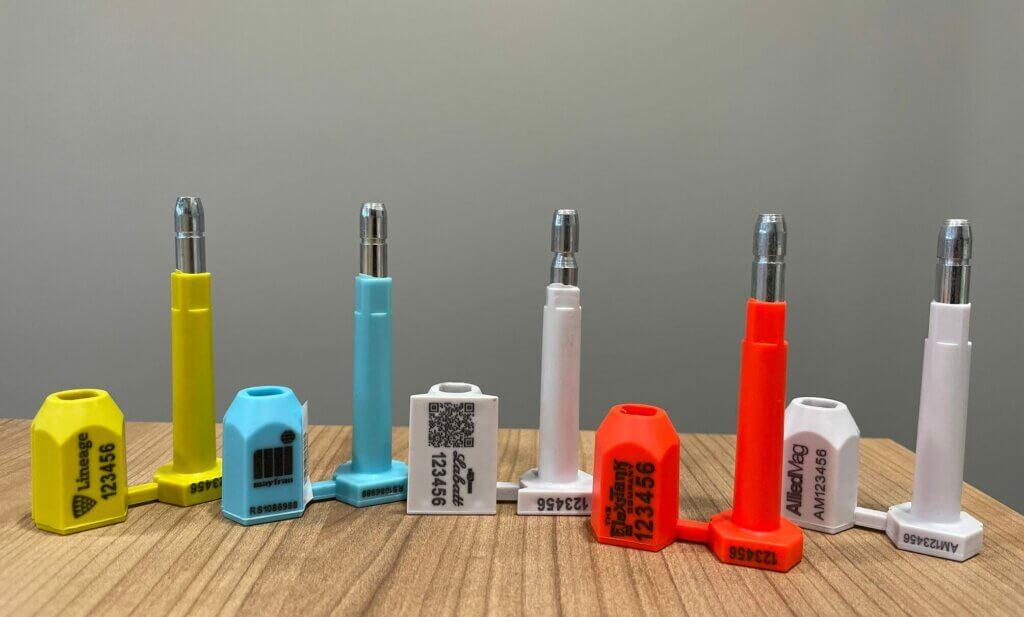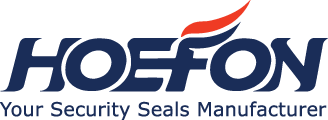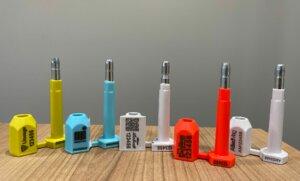Container seal number. What is it and why is it used
Each container seal has a unique, alphanumeric number. In this blogpost we will explain what a container seal number is, why they are used and when these are required.

What is a container seal number?
A container seal number is a unique identifier for containers used in the shipping and logistics industry. It is assigned to a seal that is used to secure shipping containers during transit. This seal, typically made of metal or high-strength plastic, is affixed to the locking mechanism of a container once it is loaded and ready for shipment. The seal number itself can be a combination of letters and numbers. The number can additionally be displayed as a barcode and QR code making it convenient to use with scanning devices. The seal’s unique number is also listed in the bill of lading and shipping manifest.
Why are container seals used?
Firstly, it provides a way to verify that the container has remained closed from the point of loading to the point of unloading. Each seal is designed to be tamper-evident, meaning any unauthorized access to the container would be easily noticeable as the seal would have to be broken or altered.
A replaced container seal can easily be spotted by checking the seal´s number with the corresponding number in the bill of lading and shipping manifest.
Why are seal numbers used?
The primary reason for using seal numbers is to ensure the security and integrity of the cargo being transported. In international trade, containers travel long distances, often passing through multiple transit points and handled by various parties. The seal acts as a barrier against unauthorized access, reducing the risk of theft, contamination, or tampering with the contents of the container.
Seal numbers also play a significant role in compliance and regulatory processes. Customs authorities across the globe require that containers be sealed and the seal numbers be documented. This requirement facilitates customs clearance processes, as it provides a straightforward way to verify that the contents listed in the shipping documentation match what is actually inside the container.
Furthermore, seal numbers help in the event of a dispute or claim. If a container arrives with a broken or missing seal, it immediately raises a red flag, prompting a thorough inspection. The seal number provides a reference point for investigating when and where a potential security breach may have occurred.
Additionally, the seal number is used for tracking purposes. It is recorded in aforementioned shipping documents and is used by shipping companies, port authorities, and customs officials to track the movement of the container. This tracking is vital for logistics management, ensuring that the container reaches its intended destination and helping to locate it in case of any discrepancies.
Is a Container Seal Number Obliged?
For international shipping transports often ISO 17712 certified seals are required by authorities when moving goods through customs. ISO 17712 high security seals are also obliged for all containers bound for the United States in order to be CTPAT compliant. One of the regulations of ISO 17712 is that each seal must be unique and must therefore have a unique identification number. So a unique container seal number is generally required for international shipping container transports.

The manufacturer and ‘H’ are displayed on the bottom of each certified high security seal.
To meet ISO 17712 standards high security seals must also have the manufacturer and ‘H’ engraved in the mold design. First, this makes the seal more difficult to recreate. In addition, if an issue arises, for example in the case of an illegal shipment, the manufacturer can be contacted for information.
For domestic or internal market shipping the use of a container seal and its corresponding unique number is generally not required. However, even in these cases, many logistics and shipping companies adopt the practice of sealing containers and recording their seal numbers as a best practice for security and accountability.
For more interesting reads about container safety we recommend the following articles and websites.
- Securing shipping containers
- Security seals for avoiding and spotting drugs transport
- Protecting trucks and trailers from cargo theft
- Information ISO about ISO 17712:2013
- Information U.S. Customs and Border Protection about CTPAT
Are you looking for a supplier of certified shipping seals? Please view our collection of containers and cargo seals. Hoefon Security Seals is a ISO 9001 certified manufacturer of various types of tamper evident solutions. We ship worldwide.

Niels Pas
CEO Hoefon Security Seals
Niels Pas has been Hoefon Security Seals’ CEO since 2017. He has extensive international experience and speaks 4 languages professionally.


